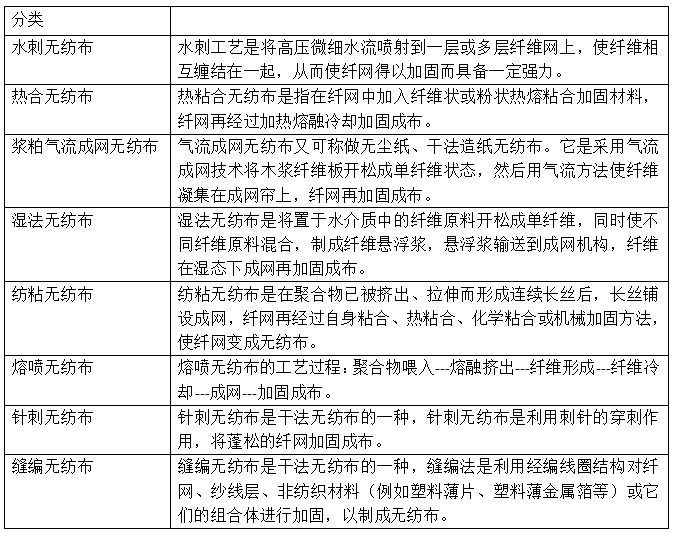Classification of non-woven fabrics and their advantages and disadvantages
Non-woven fabric is also called non-woven fabric. It can be reused after recycling. Therefore, non-woven fabric is an environmentally friendly material. The fabric is moisture-proof and breathable. It is widely used in the fields of beauty, medical treatment and fashion. Non-woven fabrics are also called non-woven fabrics because their performance and appearance are similar to cloth.

Classification of non-woven fabrics:

Advantages of non-woven fabrics:
Production of non-woven fabrics The raw material is polypropylene resin, and the fiber specific gravity is only 60% of cotton. It feels light and loose.
The finished product of non-woven fabric has moderate softness and good comfort.
Non-toxic and non-irritating are the characteristics of non-woven products, because they do not contain other chemical ingredients and are not harmful to the skin. Will not be irritating or allergic on contact.
Based on the chemical properties of non-woven raw materials, non-woven fabrics also have antibacterial and anti-moth effects. The fabric is not susceptible to mildew.
Disadvantages of non-woven fabrics:
Non-woven fabrics are not as durable and strong as fabric fabrics.
Non-woven fabrics are generally not washable and are difficult to handle after getting dirty
Because the fibers of non-woven fabrics are arranged in specified directions, fiber breakage easily occurs in the right-angle direction.
BBBMHGCVVBEW
Disclaimer:
Disclaimer: Some of the texts, pictures, audios, and videos of some articles published on this site are from the Internet and do not represent the views of this site. The copyrights belong to the original authors. If you find that the information reproduced on this website infringes upon your rights and interests, please contact us and we will change or delete it as soon as possible.
AA





